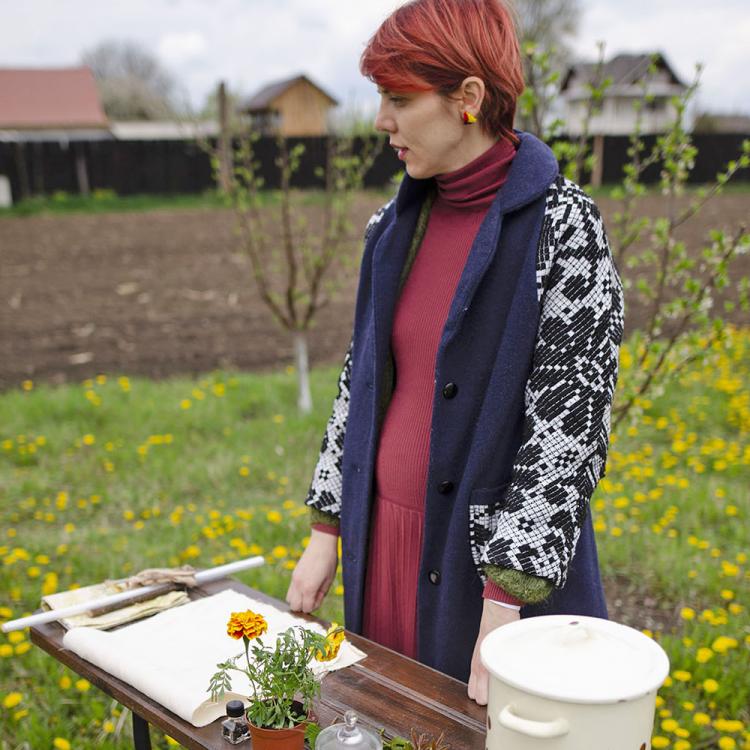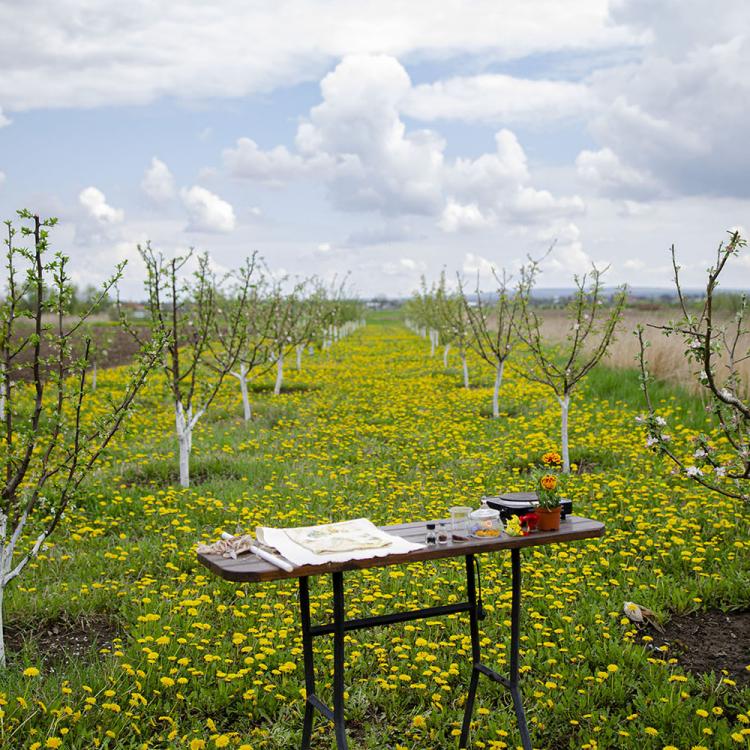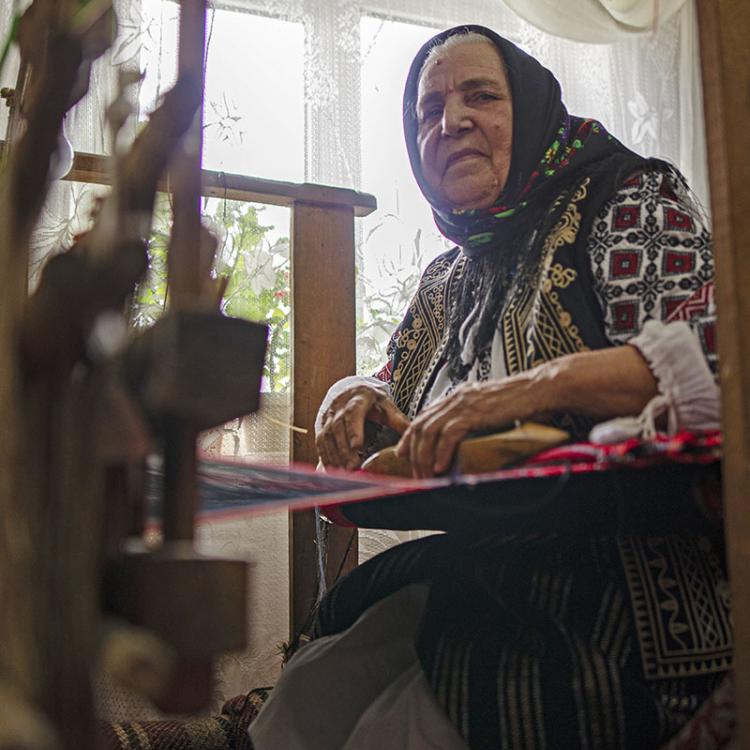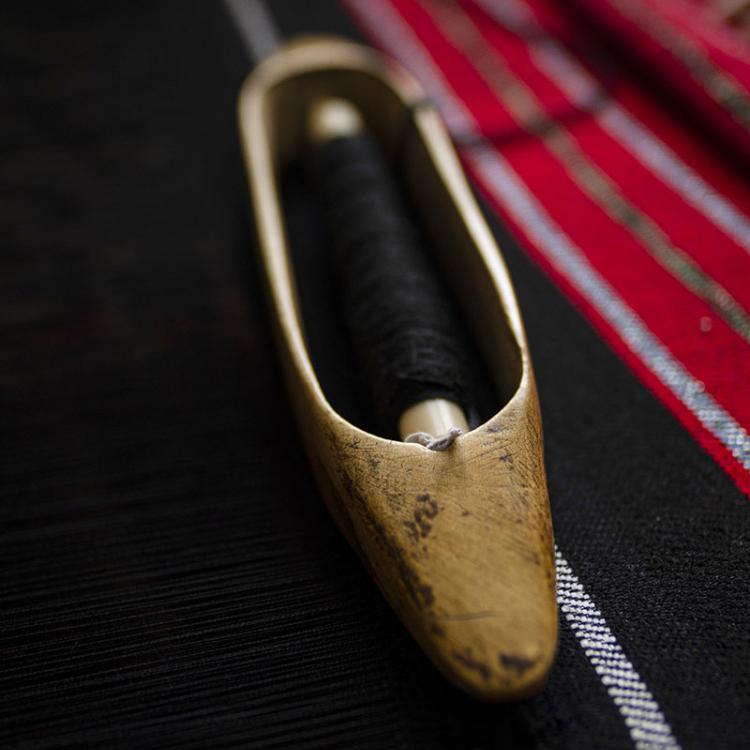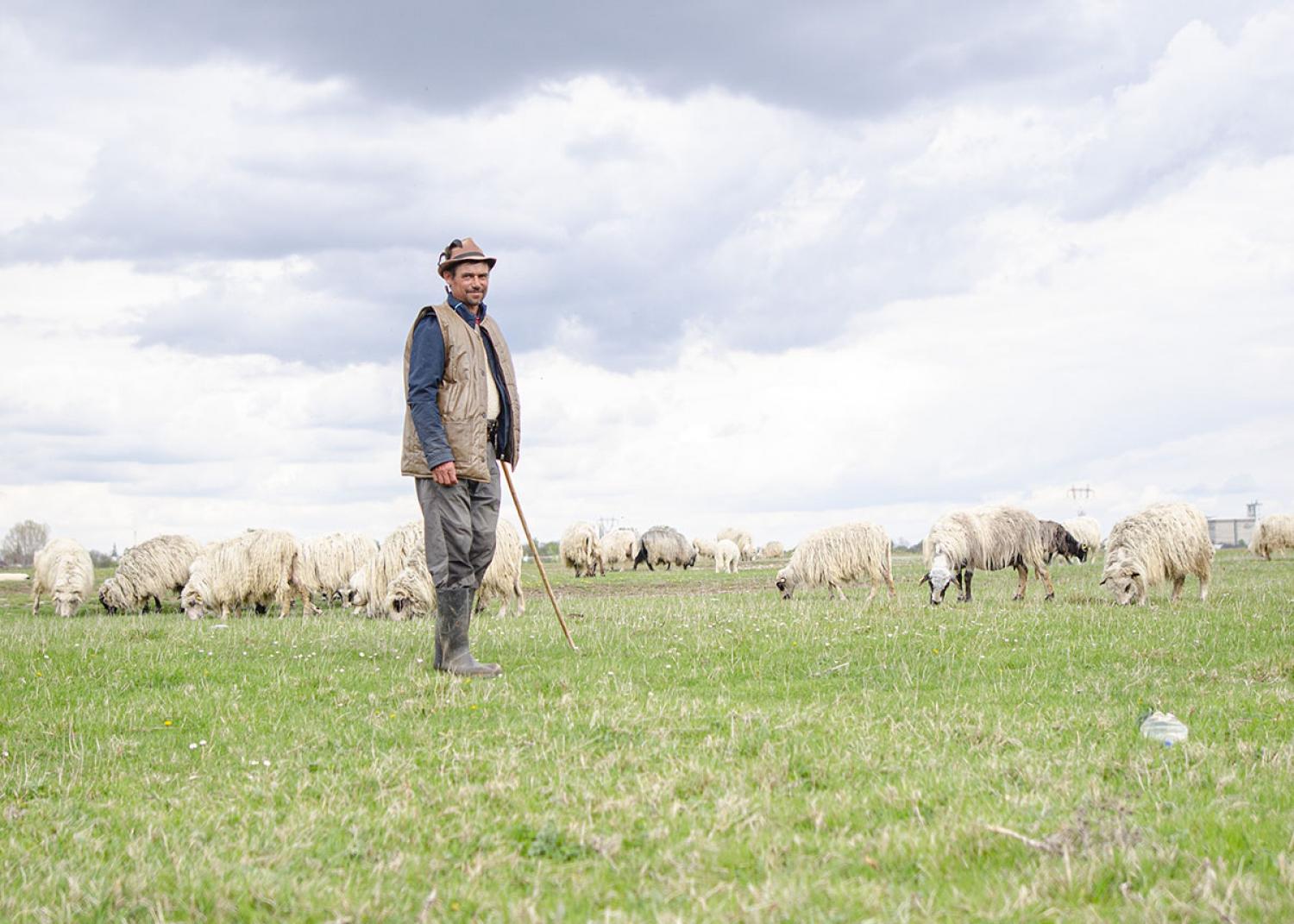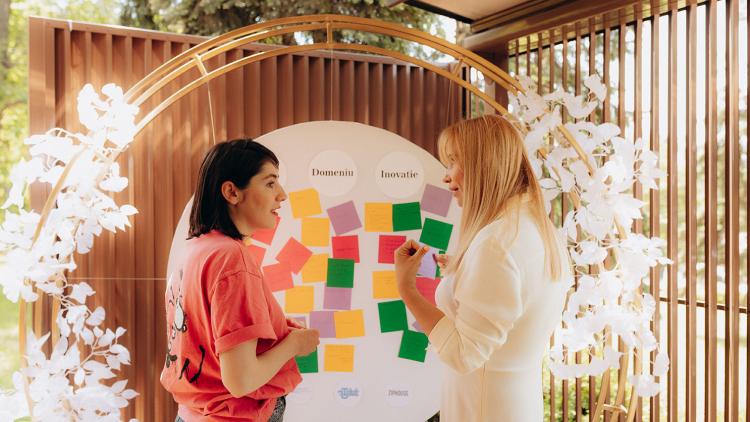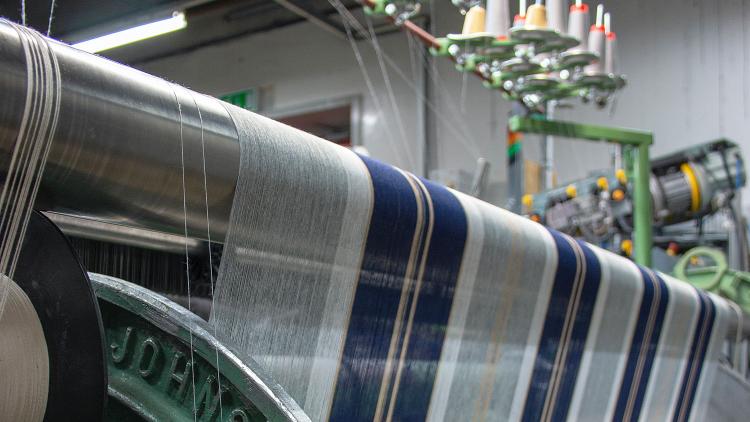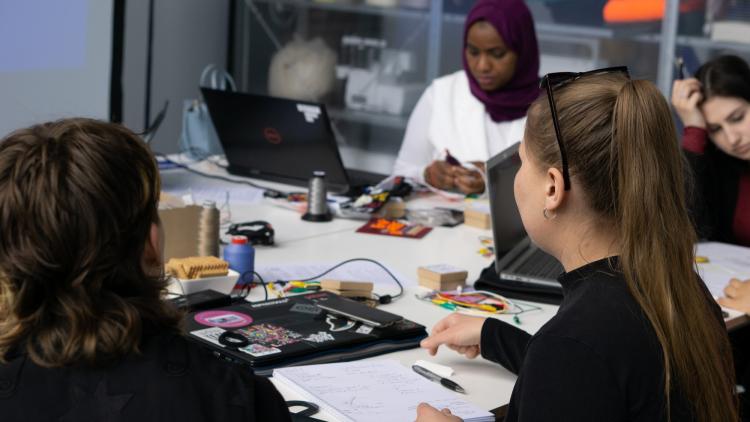A trip to Borlești: the crafts of the Romanian countryside
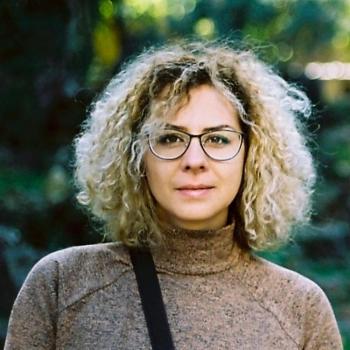
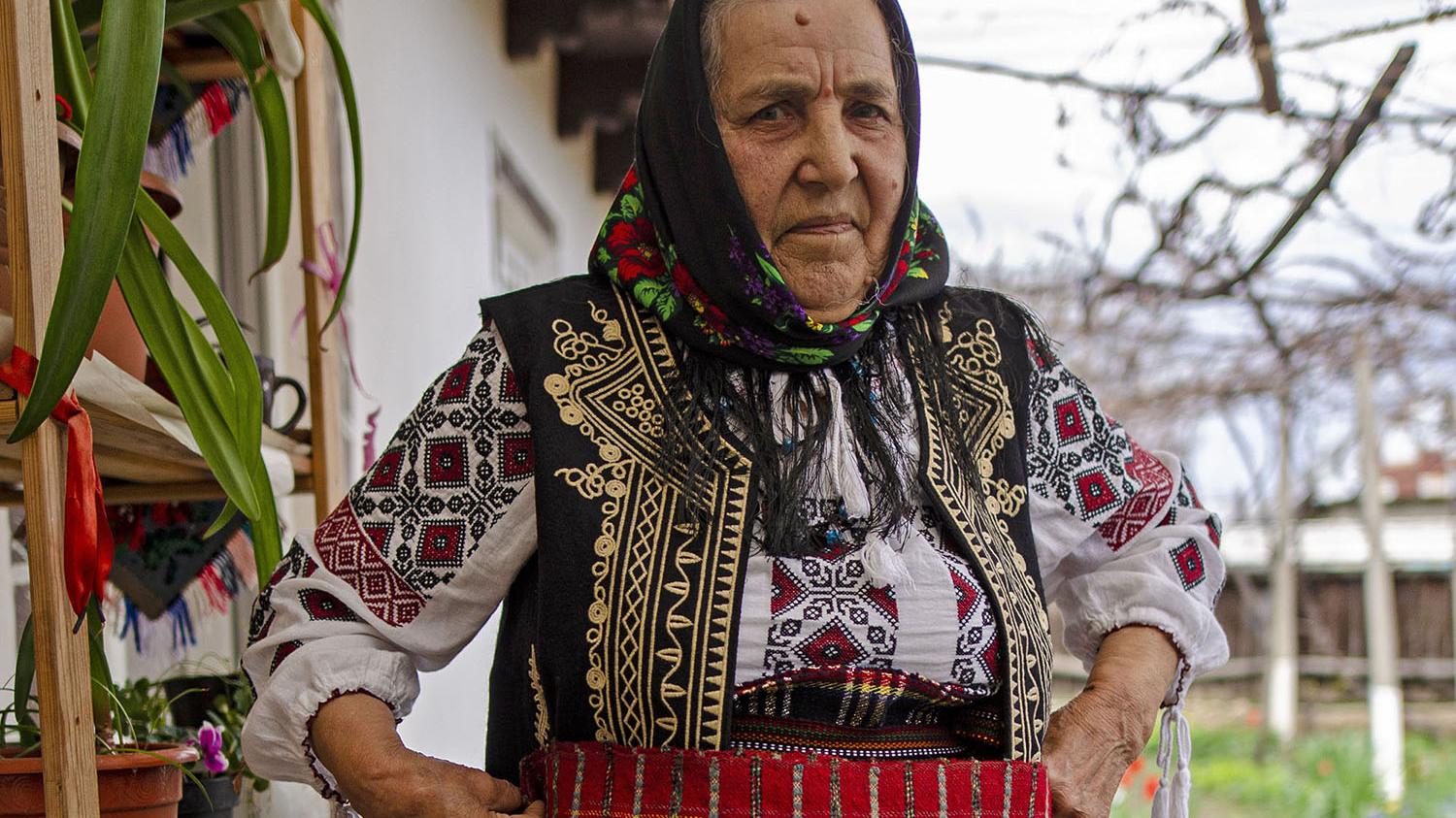
The long summer holidays of my childhood were spent at my grandmother's house in the countryside. My grandmother lived through many struggles; a childhood marked by the Second World War, followed by the communist era and the loss of most of her family's assets. I loved listening to her reminisce about her life, which to me was as beautiful and interesting as any children's story. We used to visit grandma in the spring, too, for a shorter holiday. At the tail end of winter, activities still took place indoors, and that’s when I first was exposed to home production of knitting, weaving and embroidery, which was an activity that my grandmother did with her groups of friends. I was fascinated to watch her knit and every time she let the knitting needles out of her hand I would pick them up and try, but I would just move the loops from one needle to another. She eventually taught me how to knit and embroider too. That way, at meetings with her friends I could actively participate.
Back at home, my mother carried on the tradition: she had learned sewing and knitting from her mother, and she provided me with further lessons. Nowadays, exploring the techniques I learned from them both represents a form of meditation for me but also the starting point for what I do in my job at REDU, where I develop ways of turning textile waste into new products and thus extending their life. I feel this is necessary to contrast this world of wanting more and more new things, in which we’re really feeling the consequences of the negative impact we humans have on our planet.
About two years ago, I met Elena Stanciu (of poartă-mă cu flori / "Wear me with flowers'') and with her, I discovered a new way to extend the life of clothes and textiles. She lives in a village in the Romanian countryside called Borlești and in this village women of all ages meet and teach each other tailoring, knitting, weaving, traditional embroidery techniques, dyeing textiles with plants and eco-printing and more. The better I got to know Elena, the more I wanted to do a workshop with her, bringing these processes and techniques to the city, especially the ones of dyeing and eco-printing with plants but also because it was a perfect match for the Wool Mondays event series we were developing with shemakes labs.
Our first step was to talk about the situation of wool production in Romania, which we knew is at the top of the European sheep breeding ranking but beyond that there are many unknowns. As most of the wool processing factories have closed down, we were curious to see if we could still find in rural areas where traditional processing habits are still preserved, at least on a small scale. With Elena's help we managed to get in touch with a family that owns a sheepfold with about 200 sheep and with an elderly woman who still weaves "catrințe", a traditional Romanian skirt and rugs made of textile scraps, at the loom. A voyage was planned to Borlești, about a two-hour drive from the city of Iasi; we would interview the subjects but also film them to document and promote these traditional wool-working ways in Romania. The return to the countryside was particularly welcome for me because it makes me relive my childhood: the air and the smell of smoke from the stoves of the houses instantly teleport me there.
First we made a film of Elena to document the eco-printing process. While spring was full ahead in the city when we left on the last day of April, it hadn’t quite arrived yet in the countryside. Elena’s garden was full of yellow dandelions which created the perfect setting for the filming, not to mention that we were lucky enough to have some clouds that tamed the bright sunshine. The planets aligned and the filming of the eco printing process went according to plan.
Our second stop was to visit Mrs. Ileana's house which was handily located about 150 meters away from Elena's. Because it was just a few days after Easter, Mrs. Ileana, dressed in traditional costume, greeted us with some traditional goodies specific to this holiday: cake (cozonac), red easter eggs and wine. Her house was so beautiful with its beautiful garden full of tulips in bloom and its small rooms were beautifully decorated with everything she had worked on in a lifetime: carpets, embroidery… again I found myself lost in a moment of childhood.
We were invited into a room in which equal spaces were given to a bed, a terracotta stove, and a large weaving loom. On the weaving loom set up and full of threads, she was already working on a catrință, a special order for a lady from the city. She also sang us a folk song meant to remind us to straighten our backs when working. While we may have apps on our phones that remind us to drink water or straighten our backs, Mrs. Ileana has the forerunner, these folk poems, more sung than spoken. Whatever works.
This isn’t the only loom in the house; in another room, a smaller loom was set up to make rugs from fabric scraps. We didn’t want to overstay our welcome because at 82 she tires quickly so we made to take our leave. Her granddaughter Adriana gave us a precious gift of traditional kitchen towels woven with cotton fibers that Mrs Ileana had made for each of us. They are so beautiful that, personally, I can't use mine. I keep it as a treasured thing.
The day was to end at Mrs Mariana's sheepfold, 2-3 kilometers away. She greeted us out front with a warm smile and led us to the field to show us the sheep. Two shepherds work in her sheepfold, a profession that is apparently disappearing in our country too.
While walking, we asked her what she does with the wool of the sheep she raises; this question came out of the context that recently, the Romanian Ministry of Environment, Water and Forests approved an emergency ordinance to streamline measures to be taken in waste management, including the criminalization of burning and burying waste. With around 2kg of wool per sheep, Romanian sheep farmers are finding it hard to recycle wool and it goes to waste, with demand down in the past decades resulting in the closure of processing plants. So, in recent years it has been easier for farmers to bury or burn wool than to recycle it. In the absence of sustained state support, wool has become useless compared to other fibers, and farmers have no choice but to give it up. The law is beneficial if we think about the environmental impact, but difficult if we think about the financial pressure on sheep farmers. Mariana told us that they are in talks with a factory that collects wool and uses it to make thermal insulation for houses but she’s still working out the details and financial impacts.
We arrived at the sheepfold and the shepherds were asked to “introduce” us to the sheep, who were grazing a bit too far away for our cameras. The shepherds activated the sheepdogs and a few whistles later the whole sheepfold changed its course. The sheep's bells got louder and louder until we found ourselves surrounded by sheep.
As much as we wanted to stay longer, it was already late and we had to go back to Iasi. We said our goodbyes to Mrs Mariana, who was a little disappointed that we didn't stay for dinner, but we promised her we’d return for another visit soon.
Reflecting on the journey - productive, interesting, but also personal - I realized that I somehow seek these experiences as I connect them to sensations of peace and security. It's wonderful to see how grandmothers, mothers and daughters have left their mark on the place that is their home: with the smell of cooked food and freshly baked sweets, with bed linens and wall hangings and carpets they have made, each one representing the passing of another season, another year. I hope to return to Borlești one day and will continue to explore other places full of history, with other houses, other gardens and other grandmothers with their crafts - all so similar and yet each so unique.

